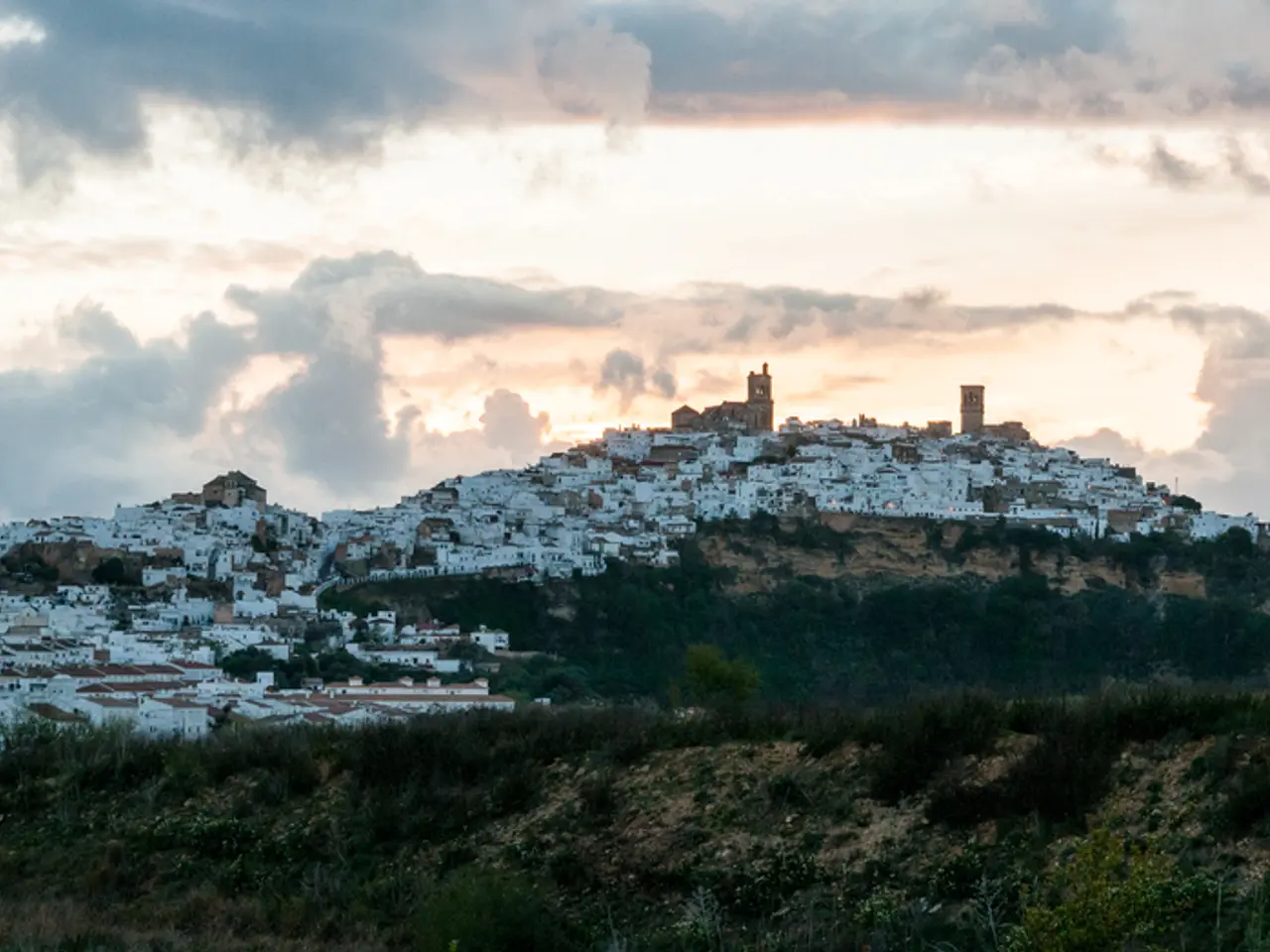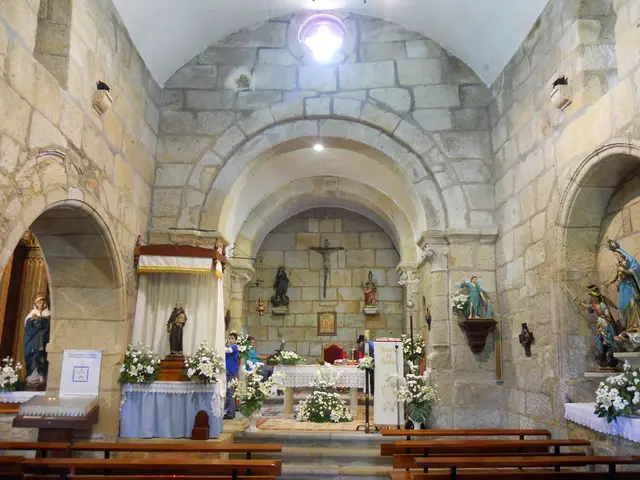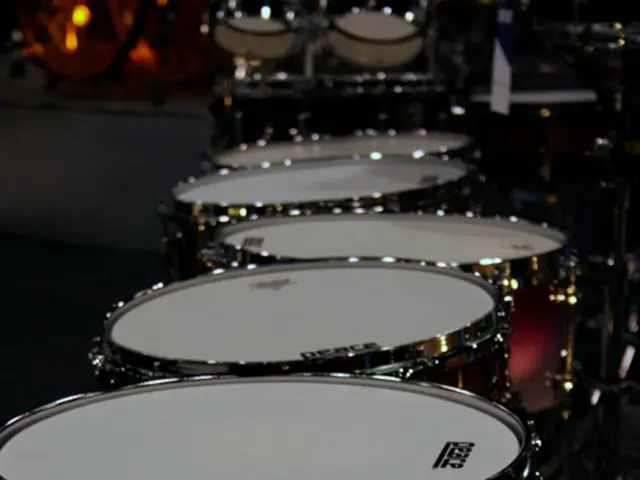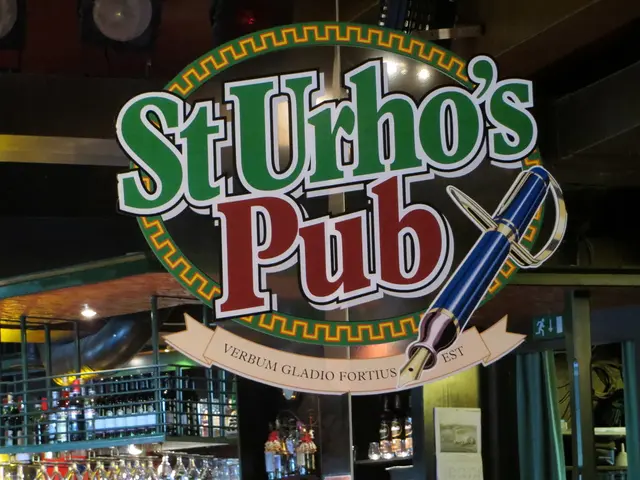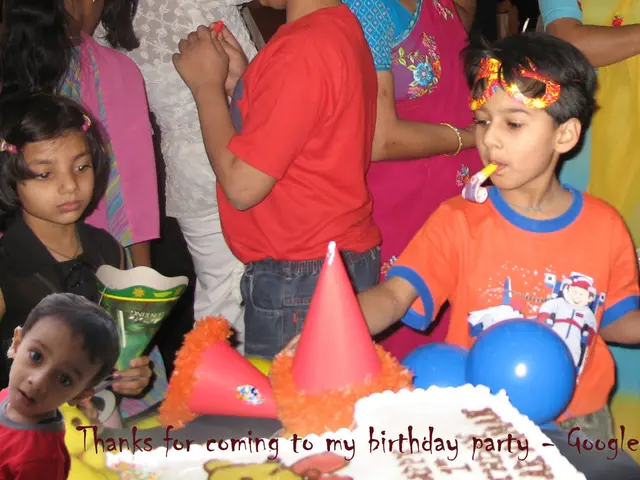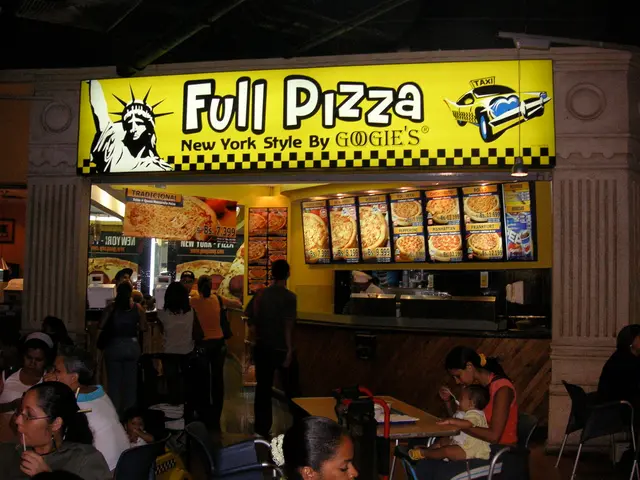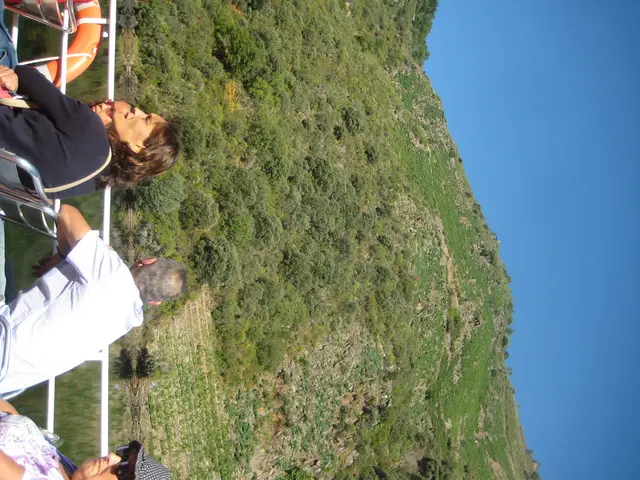Riverfront Allure Luring Visitors on the Moselle
The Moselle River, one of the three main sections in the German part of the river, stretches for approximately 230 kilometers and offers a captivating blend of history, natural beauty, and wine culture.
Koblenz and Deutsches Eck
Your journey begins at Koblenz, where the Moselle meets the Rhine River. The Kaiser Wilhelm Monument here offers breathtaking views of the confluence. The area is also known for the annual Rhine in Flames fireworks event and beautiful green spaces for recreation.
Neumagen-Dhron, Bernkastel-Kues, and Traben-Trarbach
As you venture further along the Moselle, you'll encounter charming towns such as Neumagen-Dhron, the oldest wine village in Germany, known for its winemaking tradition and Roman history. Nearby, Bernkastel-Kues and Traben-Trarbach are famous for their colorful half-timbered houses, vibrant market squares, and opportunities for boat tours and wine tasting.
Enkirch, Zell, and Beilstein
Continuing your journey, you'll come across the picturesque villages of Enkirch and Zell. Enkirch is renowned for its well-preserved half-timbered architecture, while Zell is famous as a wine village known for its “Zeller Schwarzen Katz” wine. Beilstein, often called the "Rothenburg of the Moselle," boasts medieval charm and scenic riverside settings.
Cochem and Reichsburg Castle
The picturesque town of Cochem, with its medieval fortress, Reichsburg Cochem, dating back to the 11th century, is a highlight of the region. The castle overlooks the Moselle and offers a glimpse into the region's rich history.
Trier: A City Steeped in History
Although slightly off the main Moselle route, Trier is a must-visit. Known for its Roman heritage, Trier is home to the Porta Nigra city gate and Saint Peter’s Cathedral. The Trier Cathedral, the oldest bishop's church in Germany, is a testament to architecture that has evolved over centuries.
The Moselle Wine Region
The entire Moselle Valley is renowned for its vineyards and wine culture, particularly Riesling wines. Opportunities to visit wineries, taste local wines, and learn about viticulture abound along routes like the Moselle Cycle Path.
Other Points of Interest
- The Bremmer Calmont, located in the Middle Moselle, is the steepest vineyard in Europe, with a slope of up to 65 degrees, and is only suitable for experienced hikers.
- The Mariensäule, located in Trier, offers a panoramic view of the city and was built in response to the Catholics losing the Constantine Basilica to Protestant Prussia.
- The Memorial of the German Army was inaugurated in the bastion's wall shield in Fortress Ehrenbreitstein in 1972.
- Burg Eltz, a "fairytale castle" that has been in the possession of the Counts and Barons of Eltz for 34 generations, is hidden in the woods and away from the riverside roads.
- The sculptor Johann Hartung's 1854 sandstone sculpture in the garden of the Electoral Palace depicts the meeting of the Rhine and Moselle rivers.
Notable Personalities
- Helmut Grünwald, an 83-year-old accordion player, is playing at the German Corner in Koblenz.
- Thomas Haag (59) is the winemaker of Weingut Schloß Lieser, located next to Bernkastel-Kues, who has been repeatedly named "Winemaker of the Year" and focuses on quality and family.
- Dirk Friederich (55) is a winemaker from Weingut Friederich and Son, who is part of the Bacchants, a group that symbolically carries the newly elected Bacchus onto the market square.
The Moselle River, with its wine cultivation introduced by the Romans, is a significant economic factor in the region and represents a millennia-old tradition and the tireless work of the people who have shaped this unique region of Germany. Boat tours, hiking, cycling, and wine tastings are common activities enjoyed in this region. The Middle Moselle is a popular destination for cyclists, hikers, and campers, with almost every slope covered in vineyards.
The Rhine River, which meets the Moselle in Koblenz, is the longest in Germany and offers its own array of attractions, including the equestrian statue of Wilhelm I and Victoria on the bank between the two streams, and Fortress Ehrenbreitstein, a Prussian fortress that overlooks Koblenz from the opposite bank, which can be reached by cable car for 16 euros.
In conclusion, the Moselle River offers a rich tapestry of experiences, from its historic sites and natural beauty to its vibrant wine culture and charming medieval towns. Whether you're a history buff, a wine enthusiast, or simply seeking a picturesque getaway, the Moselle River in Germany is a must-visit destination.
- In Koblenz, the Kaiser Wilhelm Monument is a popular tourist spot, offering stunning views of the confluence of the Moselle and Rhine Rivers.
- The annual Rhine in Flames fireworks event in Koblenz attracts tourists with its vibrant display over the rivers.
- The charming town of Neumagen-Dhron is Germany's oldest wine village, known for its winemaking tradition and Roman history.
- Bernkastel-Kues and Traben-Trarbach are famous for their well-preserved half-timbered houses, vibrant market squares, and opportunities for boat tours and wine tasting.
- Enkirch is renowned for its well-preserved half-timbered architecture, while Zell is famous as a wine village known for its “Zeller Schwarzen Katz” wine.
- Beilstein is often called the "Rothenburg of the Moselle," boasting medieval charm and scenic riverside settings.
- The picturesque town of Cochem is home to Reichsburg Cochem, an 11th-century medieval fortress overlooking the Moselle River.
- Trier, off the main Moselle route, is famous for its Roman heritage, including the Porta Nigra city gate and Saint Peter’s Cathedral.
- The Trier Cathedral, the oldest bishop's church in Germany, showcases centuries-old architecture.
- The Moselle Valley is renowned for its vineyards and wine culture, particularly Riesling wines.
- Opportunities to visit wineries, taste local wines, and learn about viticulture abound along routes like the Moselle Cycle Path.
- The Bremmer Calmont, located in the Middle Moselle, is the steepest vineyard in Europe, with a slope of up to 65 degrees, and is only suitable for experienced hikers.
- The Mariensäule, located in Trier, offers a panoramic view of the city and was built in response to the loss of the Constantine Basilica to Protestant Prussia.
- The Memorial of the German Army was inaugurated in the bastion's wall shield in Fortress Ehrenbreitstein.
- Burg Eltz, a "fairytale castle" in the woods, has been in the possession of the Counts and Barons of Eltz for 34 generations.
- A sandstone sculpture in the garden of the Electoral Palace depicts the meeting of the Rhine and Moselle rivers.
- Helmut Grünwald, an 83-year-old accordion player, is a popular figure at the German Corner in Koblenz.
- Thomas Haag, the winemaker of Weingut Schloß Lieser, has been named "Winemaker of the Year" and focuses on quality and family.
- Dirk Friederich, a winemaker from Weingut Friederich and Son, is part of the Bacchants, a group that symbolically carries the newly elected Bacchus onto the market square.
- The Moselle River's wine cultivation, introduced by the Romans, is a significant economic factor in the region.
- Boat tours, hiking, cycling, and wine tastings are common activities enjoyed in the Moselle Valley.
- The Middle Moselle is a popular destination for cyclists, hikers, and campers.
- The Rhine River, which meets the Moselle in Koblenz, offers its own array of attractions, including the equestrian statue of Wilhelm I and Victoria on the bank between the two streams.
- Fortress Ehrenbreitstein, a Prussian fortress that overlooks Koblenz from the opposite bank, can be reached by cable car.
- The Moselle River offers a rich tapestry of experiences, from its historic sites and natural beauty to its vibrant wine culture and charming medieval towns.
- Whether you're a history buff, a wine enthusiast, or seeking a picturesque getaway, the Moselle River in Germany is a must-visit destination.
- The Moselle River represents a millennia-old tradition and the tireless work of the people who have shaped this unique region of Germany.
- Whether it's a day trip or a longer vacation, the Moselle River region offers numerous opportunities for exploration, relaxation, and enjoyment.
